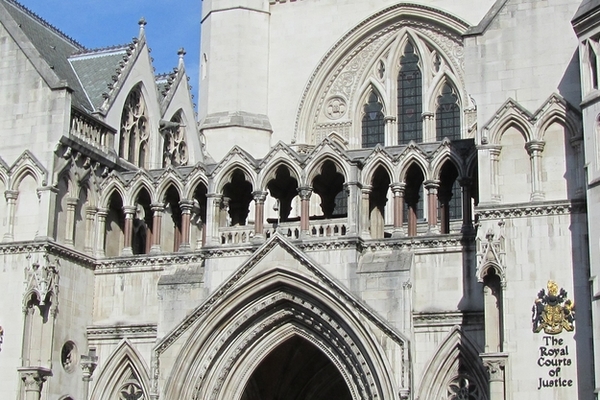The benefit cap tightrope
In the opening investigation in our new series, IH Spotlight, Sophie Barnes unveils the first exclusive analysis of the lower benefit cap

While news outlets have been filled with Brexit, Donald Trump and – on a more specialist level – the Housing White Paper and housing grants, far less attention has been paid to a crucial welfare reform which was introduced at the end of last year.
The overall cap on housing benefit dropped from £26,000 to £20,000, or £23,000 in London. This change, although under-reported, is seminal – affecting a wide demographic of households across the country.
Inside Housing has conducted detailed research to build up a comprehensive picture of the impact of the policy, and what is being done to mitigate its worst effects.
Our research was based on Freedom of Information Act responses from 203 councils and 34 housing associations. There are now 36,591 households affected, or due to be affected, by the lower cap among these landlords – a huge jump compared with 10,855 under the higher cap, although roughly in line with government estimates nationally. These figures change as households’ circumstances change.
New intentions
The old cap predominantly hit large families or those in expensive areas. Under the new cap the profile of the households affected has changed; households are spread across the country rather than concentrated in London.
In Birmingham the number of households affected by the benefit cap is estimated to have shot up since the cap was lowered – from 547 to 4,541, according to its Freedom of Information Act response. Bournemouth has seen a similar rise, from 38 to 207 households. In Oldham 304 households have been hit – a steep rise from the 30 previously affected. Rotherham has gone from 44 to 271, and the Wirral from 38 to 305 households. This is no longer a London-centric issue.
The original intention of the benefit cap was to bring down the housing benefit bill, characterised in the tabloid press as swallowed up by big families and expensive homes. Under the new cap households across the country and average-sized family homes have been hit the worst.
READ MORE ABOUT THE BENEFIT CAP

Landlords tighten up affordability criteria as benefit cap bites
David Pipe, policy and practice officer at the Chartered Institute of Housing, says lowering the cap “has changed the profile affected” and the policy has “become divorced from its original aim”. A spokesperson for the Department for Work and Pensions said the new limit on the cap “will ensure the amount that people on out-of-work benefits can claim better reflects the circumstances of many working families”.
Our research revealed that anyone – from a household in a caravan to a family in an eight-bedroom home – is now subject to the cap. In York, four households living in caravans have seen their benefits capped, three in Harrogate, and two in Bradford. In Rochford, one household living in bed and breakfast accommodation has been capped.
The most commonly affected properties are three-bedroom houses – a problem for housing associations that have traditionally built three-bedroom family homes. This is a tough problem to solve quickly. Development plans usually have a five-year lag, so even if associations plan to up their two-bedroom homes significantly, this will take time to filter through into their supply.
Clare Powell, director of strategy and research at Sovereign, says the development agreements they are delivering on now were in place “five or six years ago so tweaking a development programme isn’t something you can do quickly”.
Councils and housing associations have taken steps to support households hit by the cap, partly to try and soothe money worries and partly because the risk of increasing rent arrears is a threat to social landlords.
Thirty-three councils were able to quantify how many of their tenants affected by the benefit cap were in rent arrears. Out of these an average of 44% of tenants hit by the benefit cap are in arrears. In Dacorum, 60 out of 93 council tenants are in arrears, while in the London Borough of Greenwich the figure is at 81%.
Offering support
The surveys also revealed a huge range of approaches to supporting tenants. Out of 143 councils and housing associations to respond to a question about help for those affected, 57 have either done nothing to offer support or simply steered households towards the local job centre or Citizens Advice.
However, 76 councils and housing associations have made efforts to reach out to those affected by providing employment advice, training opportunities, budget advice and helping those who are eligible to claim benefits to exempt them from the cap. A handful have created dedicated roles to support those affected.
When landlords do offer support, there is no guarantee tenants will take up the offer. Jackie Adams, service assurance technical specialist for Slough Council’s welfare reform team, says despite promoting budgeting support and training for tenants “we’re not getting the engagement”. She estimates less than 10 people have taken up the offer of help. This leaves landlords in a tricky position if tenants start racking up rent arrears.
The main support councils can give is through Discretionary Housing Payments (DHPs). The majority of councils said they will issue DHPs to at least partly cover the gap in housing benefit, but this is a short-term measure for many. Ms Adams says Slough Council, which had spent 23% of its DHP fund solely on benefit cap tenants, may have to restrict its payments next financial year.
With housing associations eyeing their rent arrears, just under a third responding to the survey said they have tightened up their affordability criteria for lettings because of the benefit cap. Mr Pipe says more organisations are “building affordability checks into the lettings process” and he expects this to become “quite common”.
Heather Bowman, chief operating officer at Sovereign, says the organisation has had “some really clear and honest conversations in the beginning around what people can realistically afford”.
One association to respond to our anonymous survey said the organisation carries out affordability checks for all new tenants and is “unlikely to let certain properties to families unable to afford their housing costs if already affected by the cap”. Another said it will offer support but “ultimately if the tenancy is unaffordable we will decline the application”.
The benefit cap policy threatens to strike at the heart of housing associations’ social purpose, preventing them from housing the poorest in society. As the welfare reform agenda rolls on, tenants and landlords will face tough decisions.













